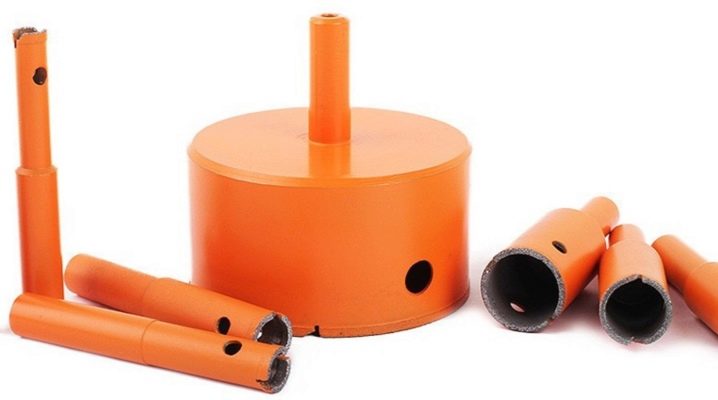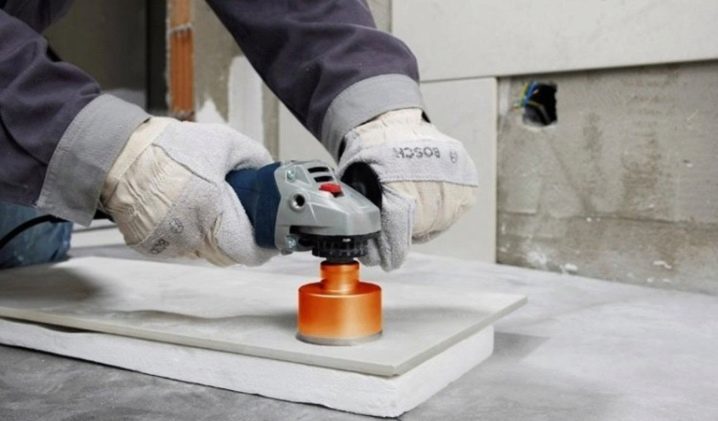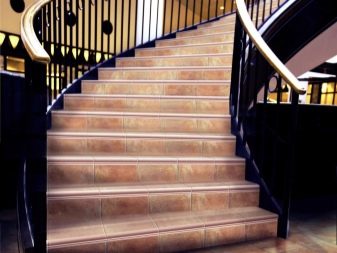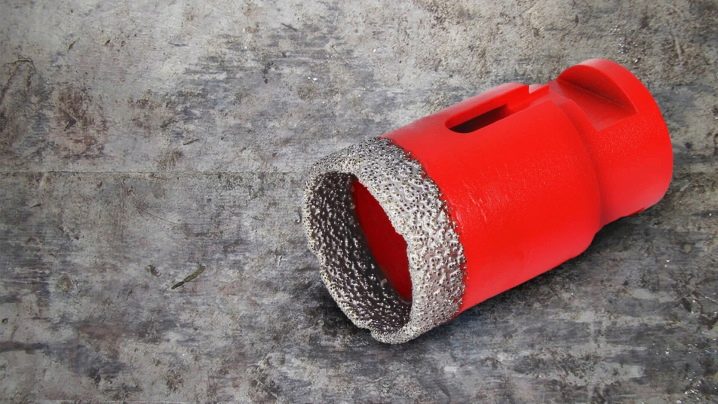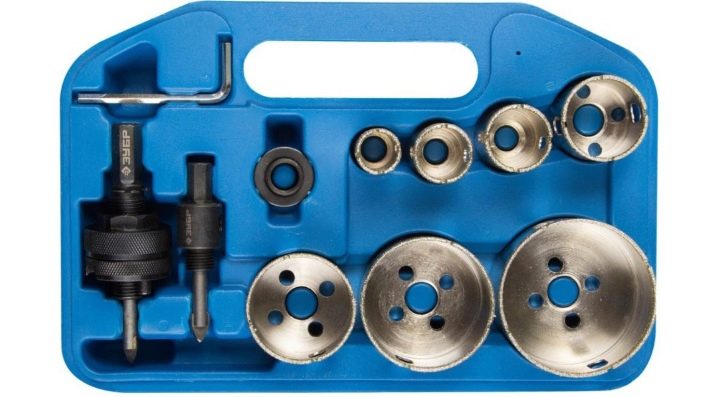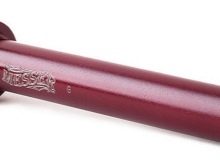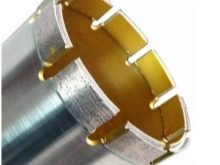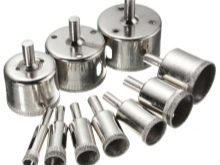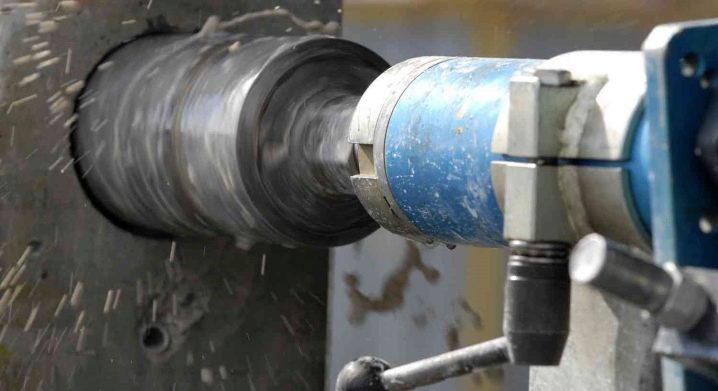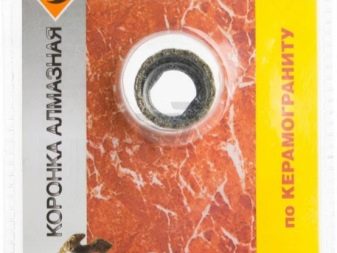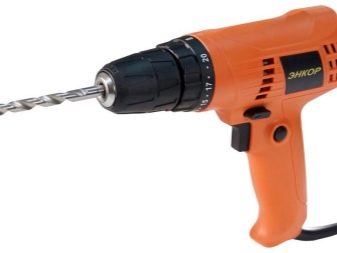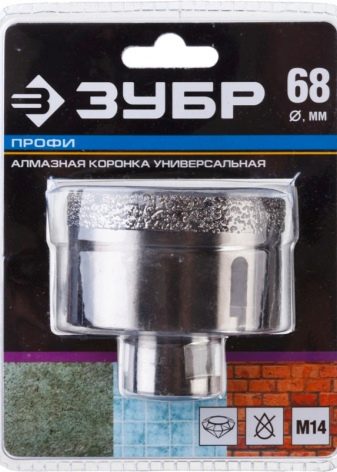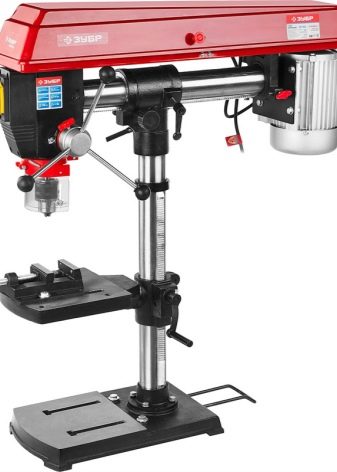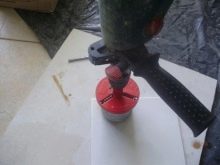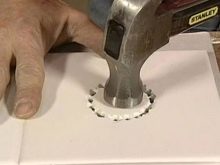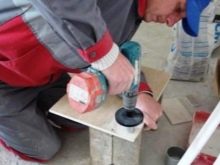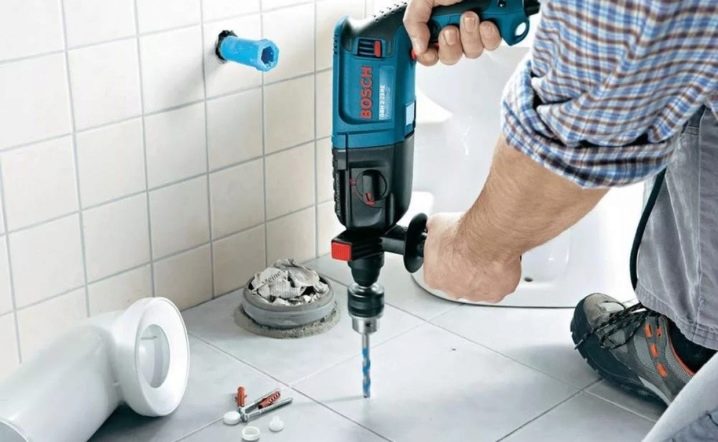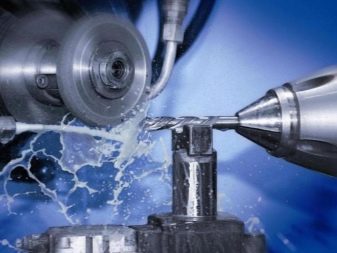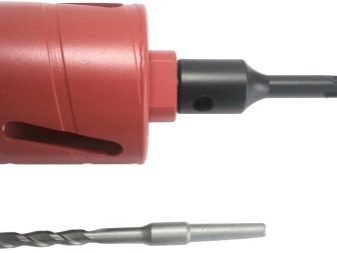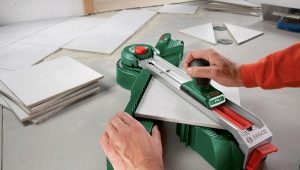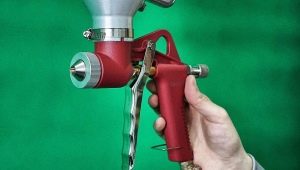How to choose a diamond bit over ceramic granite?
Porcelain tiles are a popular cladding material, which is characterized by a high level of strength. Accordingly, it is not an easy task to make any holes in the products or to cut the tiles. Requires special tools and techniques for the implementation of these procedures.
Characteristics of the material
The hardness and high strength of porcelain stoneware are provided by the raw materials from which it is made and the production method itself. First, the granite chips are mixed with clay, then the mixture is pressed under high pressure and fired. As a result, the plate is not afraid of overloads, it is characterized by high density and is not subject to deformation. However, despite its high strength, when machined, the material is brittle, which creates difficulties during drilling and requires a delicate approach to business.
Taking into account the quality of the material, it is often used for finishing flooring in industrial enterprises and premises where a large gathering of people is constantly observed. In everyday life, porcelain stoneware is used for cladding stairs and pools, creating facades and fences, as well as for installing communication systems.
Special features
High density is an undoubted advantage of the material, but at the same time it requires high strength from the working tool. To lay the cord or fix the parts, the plate is drilled. The holes of small diameter are made with spear-like drills with diamond tips, and for wider openings diamond or tungsten carbide crowns are necessary. In this case, it will be about diamond crowns.
The crown consists of a rod and a cup, diamond crystals are located along the edge of the cup. Diamond chips are electroplated, which implies a denser concentration of diamond segments. The advantage of this method of coating is low cost.
The crowns have the following functional feature - they are able to reduce the end pressure at the time of drilling, which will protect the material from damage and speed up the entire course of work.However, their working life is extremely small, and therefore with one crown a slab of approximately 8 mm can be drilled no more than 5 or even 4 times. They are used to create a bottom plate, switches and plumbing pipes.
How to choose?
Crowns are used to create localized holes in very hard materials, which include granite. Diamond, being a mineral, is an extremely durable and metastable material that ensures the constant sharpness of the blades and does not require regular grinding. When working with porcelain stoneware this tool is indispensable.
As noted earlier, visually the crown looks like a rod or a drill, on which the cup is mounted. The lower part, which is a rod of metal, is attached to the drill or perforator. The upper part - cutting - consists of an edge covered with diamond grit. It may have cuts or be completely solid. In addition to the electroplating method of application, there is also a vacuum-diffuse sintering method, in which the crumb is welded to the edge.
When choosing a diamond crown based on the following features:
- diameter - in the construction market you can find crowns of the most different diameters, starting from 10-19 mm and ending with 33-83, 100 mm;
- length;
- distance from one segment to another and their size;
- availability of special through cutouts for cooling;
- metal thickness - thin walls provide more accurate drilling, but at the same time the tool life is significantly reduced.
Also crowns can vary in the presence or absence of a special drill with a double-sided cutting part and wide end. If it is not, then when drilling it is better to use the fixation with the help of a stationary machine or holder that will fix the electric drill. If there is a drill, then a special fixation is not required. However, if there is a drill during work, the workplace should be marked with a wooden template or slightly deflect the centering drill before starting.
The drilling process can be carried out with and without cooling. Diamond coating allows you to drill on dry without adding water. This increases the level of vibration and the tool can heat up to 450 degrees, which requires a very careful attitude to the equipment.
For details on the types of diamond crowns, see the following video.
Models
Of all the companies selling crowns and other materials, the most two companies are popular and widespread:
- Enkor You can buy crowns individually or immediately as a whole set. The set consists of 9 diamond products, to work with them you will need a drill of the same brand. Spraying method - galvanic. Good segments for wet drilling provide an excellent supply of water to the cut zone. Also in the crowns there are segments for "dry" drilling. The set contains crowns with diameters of 25, 29, 38, 44, 70 and 73 mm. In addition, the crowns of this brand can be 68, 35, 32, 54, 20, 57 and 83 mm in diameter. The price of such a set is from 1500 to 2500 thousand rubles.
- Bison. These porcelain stoneware bits are designed for “wet” drilling. The set contains diameters from 19 to 65 mm. Electric drills and stationary drilling machines are suitable for work, so water cooling is absolutely necessary. Products have a centering drill. However, the piece can be purchased crowns and for "dry" drilling, there is a wide range in diameter. The price is somewhat higher due to the case of carbon and high-quality steel - from 3,000 thousand rubles.
Useful tips
In order not to damage the slab and save the working tool itself, you need to follow a few rules:
- You can drill only from the front.
- To preserve the working life of the master drilled a hole only 2/3 of the thickness. The remaining bottom is simply knocked out with a metal rod or a sharp hammer blow. In this case, the front side will turn out to be almost perfect, and the wrong part with chipped will not be visible.
Under a plate of porcelain tile you need to put a solid sheet of chipboard or a wide wooden board.
- The drilling process itself does not depend on the crown and the apparatus, but on the pressure of the worker, so do not press the tool hard to reduce the number of chips from the wrong side.
- It is worth remembering that not all drills are suitable for crowns. If an electric drill is used, then it should have a small-turn function and the possibility of a smooth start. If a perforator is used in the work, then it should have functions for turning off the impact mechanism and lowering the speed of rotation of the cartridge. Drill only at right angles. If the tool is rejected, it may be chipped. Damaged as a plate and a crown.
When working with a drill, it is recommended to install it on the machine or a special holder that will immobilize the tool, which will greatly simplify the task and reduce the level of marriage.
- During operation, the crown may rub against the material and become very hot. Then microcracks form inside the material, which break its strength and can lead to severe deformation. The cutting function is also disturbed, and the crown quickly fails. Therefore, the drill needs to be cooled either with a constant pressure of water, or to make a puddle around and from time to time to pour water into it.
- In order to choose the right diamond crown for ceramic granite, it is necessary to evaluate the hardness of the material itself, the thickness of the plate and the diameter of the future hole. The larger the diameter of the crown, the more expensive it is, so it is better to make holes of the same size. This will help avoid the need for additional purchases. You can immediately purchase a kit, which contains commonly used dimensions, an adapter and a key that fixes the centering drill.
